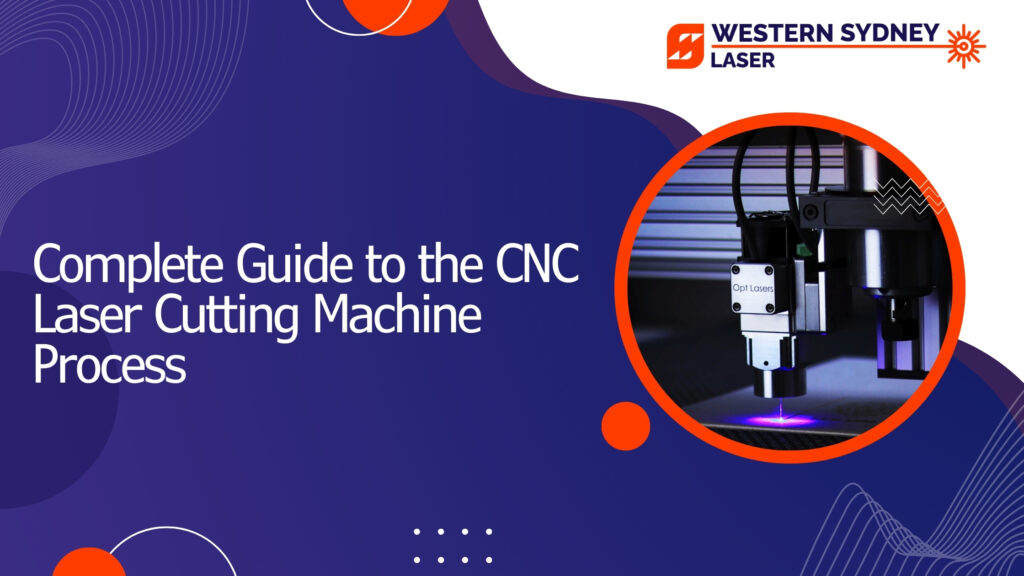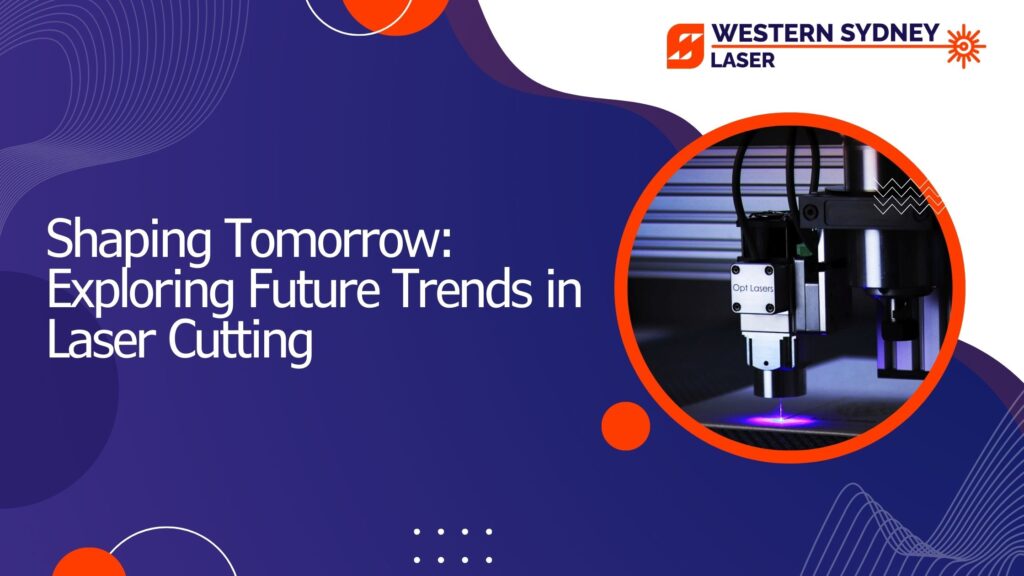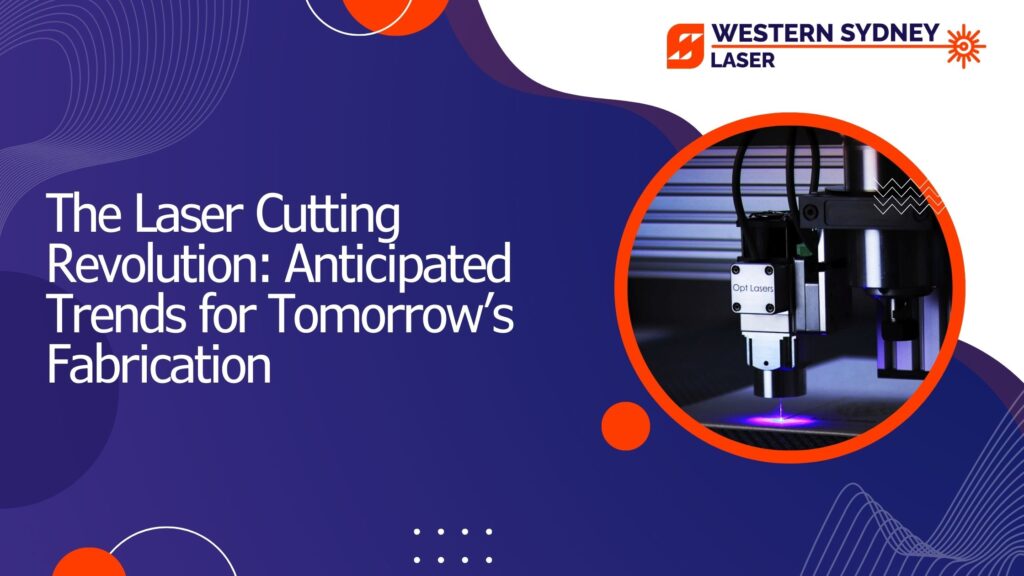CNC (Computer Numerical Control) laser technology has revolutionized industries in diverse industries such as manufacturing, automotive, aerospace, and design. CNC systems direct high-powered laser beams to cut, engrave, and shape a variety of materials, including metals, plastics, wood, and fabrics.
CNC laser cutting can always succeed, regardless of whether the project is mass-produced or customized.
This guide will help you gain a profound understanding of how CNC laser cutting works, the types of machines, its advantages, and its applications.
What is CNC Laser Cutting?
A CNC system controls the laser movement based on preprogrammed instructions, ensuring precision. Lasers melt, burn, or vaporize materials, allowing them to be cut accurately with high accuracy.
CO2, fiber, and crystal lasers are some of the lasers used in CNC cutting. Each type is suitable for a different kind of material or application. The process involves three main stages: preparing, cutting, and processing.
How Does CNC Laser Cutting Work?
Laser Source
During cutting, a powerful laser beam is emitted from the laser source. Typically, beams are focused through lenses or mirror sets in order to achieve a fine, concentrated point of energy. Material absorbs the laser’s power, melting, burning, or vaporizing as a result.
CNC Programming
CAD (Computer-Aided Design) is a computer-based design format used by CNC machines. An approved design is converted into machine code (usually G-code) that informs the CNC system where to cut and how to move the laser.
With its precision programming, cutting results are repeatable and accurate, allowing it to be used in mass production.
Material Interaction
Depending on the material properties, laser type, and intensity, the laser beam interacts with the material in several different ways:
- Melting: Lasers melt materials, and pressurized gases (often nitrogen, oxygen, or air) remove the molten matter.
- Vaporization: When laser is used on wood, the material vaporizes, resulting in a clean cut.
- Burning: When the material is exposed to high temperatures, it burns away. The method is commonly used with organic materials.
Assist Gas
A CNC laser cutting machine typically uses an assist gas, such as oxygen or nitrogen, in addition to the laser beam to remove molten material from the cut and prevent oxidation.
Using oxygen for cutting increases the speed of the process by exothermically reacting with the metal, whereas nitrogen acts as an inert gas, protecting the metal from oxidation.
Focusing Lens
The focusing lens helps focus the laser beam to a minimal diameter, usually less than a millimeter. This allows the laser to cut with high precision while minimizing material waste. Depending on the thickness and hardness of the material, the beam can be focused.
Types of CNC Laser Cutting Machines
Laser-cutting machines use three main types of lasers, each with unique characteristics:
CO₂ Lasers
The CO2 laser uses carbon dioxide gas as a laser medium to produce laser light. These types of machines have various use cases, including cutting wood, acrylic, glass, textiles, and plastics.
Sign-making, furniture, and architectural models are among the industries that use CO2 lasers for cutting thicker materials because of their wavelengths of around 10.6 microns.
Fiber Lasers
An optical fiber laser uses fibers doped with rare elements such as erbium and ytterbium to produce solid-state laser light. Lasers with wavelengths in the range of 1.06 microns can cut steel, aluminum, and brass.
Fiber lasers offer faster cutting times and greater energy efficiency than CO2 lasers, making them popular for cutting metal in industrial applications.
Crystal Lasers
A crystal laser is similar in wavelength to a fiber laser, but it generates its laser beam by means of crystal rods. Metals and ceramics are typically cut using these machines.
Crystal lasers are undoubtedly powerful, but their operational lifespan is shorter than that of fiber lasers, and as a result, they are more expensive to maintain.
Suitable materials for CNC laser cutting
CNC laser cutting has the advantage of being able to cut a wide variety of materials. The following materials are commonly used:
- Metals: steel, aluminum, brass, copper, titanium, stainless steel
- PVC, ABS, PETG, polycarbonate, acrylic
- Wood: MDF, plywood, balsa, hardwood
- Paper and Cardboard: Used to package, model, and craft
- Textiles: polyester, cotton, silk
- Composites: Plastics with fiber reinforcement and laminated materials
Critical Advantages of CNC Laser Cutting
Accuracy and precision
CNC laser cutting machines can produce excellent cuts with tolerances as close as +/—0.001 inches. This level of precision is essential in applications that require precision, such as aerospace and medical devices.
Versatility
CNC lasers can cut a wide range of materials, including metals, plastics, wood, textiles, and composites. Consequently, they are ideal for a wide range of industries, from the automotive sector to furniture design.
Efficiency and speed
Laser cutting provides faster and more efficient results than traditional cutting methods. With CNC machines, complex designs can be handled quickly, ensuring repeatability and reducing human error.
Integration and automation
CNC laser cutting machines are fully automated, so they use much less manual labor than their traditional counterparts. A range of CNC machines can be integrated into larger manufacturing systems, providing a seamless operation, and they can cut components based on demand in real-time.
Easy to maintain
Modern CNC laser cutters do not need routine maintenance; they require only periodic checks and maintenance. Fiber lasers, in particular, have long operating lifespans, which reduce downtime and increase productivity.
Limitations of CNC Laser Cutting
While CNC laser cutting offers many advantages, it does have certain limitations as well:
- Initial Investment: Purchasing a CNC laser cutting machine, particularly a fiber laser, can be pretty costly. Although this may seem negative, long-term savings in labor, materials, and operations often outweigh the cost.
- Limitations of Material: Laser cutting has the advantage of being versatile, but more than polished metals are needed for laser cutting. The coatings might need to be unique, or additional processes might be required.
- Limits on thickness: CNC laser cutting is most effective when cutting thin to medium-thick materials. Plasma or water jet cutting may be required when cutting extremely thick materials.
Industries That Benefit from CNC Laser Cutting
Several industries benefit from CNC laser cutting because of its versatility and precision:
Automotive
The CNC laser cutting process is extensively used to cut body panels, automotive engine parts, and exhaust systems. The machine’s accuracy and speed ensure a high level of consistency and quality.
Aerospace
Aerospace requires tight tolerances and lightweight materials. Turbine blades, structural panels, and aircraft interiors are among the components that are CNC laser cut.
Electronics
CNC laser cutting is used in the electronics industry to produce intricate components such as printed circuit boards (PCBs) and enclosures.
Art and Design
Artists and designers create intricate patterns, sculptures, and installations using CNC laser cutting. Laser cutting’s precision allows for the cutting of a variety of materials with outstanding detail and innovation.
Best practices for CNC laser cutting
If you are considering implementing CNC laser cutting in your company or as an individual, consider the following best practices:
- Choosing the Right Tool: Select an appropriate laser (CO2, fiber, crystal) based on the type of material and thickness you intend to work with.
- CAD Files: Ensure that your CAD files are clean and straightforward to understand so that the cutting process is kept from being slowed down by unnecessary complexity.
- Regular Maintenance: It is essential to follow the manufacturer’s recommendations for maintenance, which include ensuring that the lenses are aligned, cleaning parts, and monitoring the levels of gases in the system.
- Selection of Materials: Make sure that the material you choose is appropriate for the laser type you intend to use, and avoid materials that may damage the laser.
Conclusion
The CNC laser cutting process continues to be a compelling, efficient, and versatile technology in modern manufacturing.
Intricate art pieces to automotive components; this technology provides precise and reliable cutting. Its precision, efficiency, and automation make CNC laser cutting technology a crucial tool in many industries, making it a good investment.



